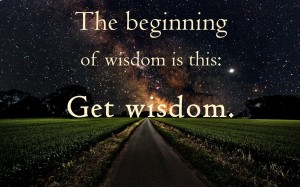
YOUR BROWSER IS OUT OF DATE!
This website uses the latest web technologies so it requires an up-to-date, fast browser!
Please try Firefox or Chrome!

As we say goodbye to the year 2015, we consider (and hope) for what 2016 will bring. Resolutions are made, whether that means losing extra weight brought on from holiday goodies, starting school, spending more quality time with family or saving more money for that dream vacation… we’ve all got something we want to accomplish next year!
A recent survey asked 2,300 people if they were happy with their job. A surprising 43% were unhappy and wanted to change something; more money, more time at home, advancement, growth, development.
If you are one of those individuals unhappy with your current situation, consider adding a new career to your 2016 resolutions. A new year is a new beginning for our GREAT employers with budgets, territories and unfilled needs.
We’ve got the opportunities and are happy to walk along side of you in your career path to find you a career that offers more money, better advancement, growth prospects and added time with your family.
We wish you the happiest of holidays and happy beginnings to your 2016!
Do you work for a company that is people or profit first?
 We live in an era where financial performance is the major measure of business success. As the recession still lingers, leaders of business in every industry are faced with the challenges of maintaining and growing profit. It is a tough task and as I analyze and connect with leaders in the restaurant industry, I have identified two distinct paradigms of thought which from an interesting dichotomy of financial sustainability.
We live in an era where financial performance is the major measure of business success. As the recession still lingers, leaders of business in every industry are faced with the challenges of maintaining and growing profit. It is a tough task and as I analyze and connect with leaders in the restaurant industry, I have identified two distinct paradigms of thought which from an interesting dichotomy of financial sustainability.
adsfsadf
These two paradigms are different in nature and develop the course of decision making throughout a culture. Companies are either:
1. Developing business through focus on profit that depicts their people processes.
2. Having their people processes first that in turn, develop profit.
asdfasdf
Those that have the eye on the bottom line and use that metric as the focal point to cut costs, be below market on compensation and focus on quantity over quality are the profit first companies. I certainly understand the short term ramifications taking these measures can have on increasing profitability; however, I fear these tactics will not lead to sustainable profits and will certainly lead to a higher turnover. The long term ramifications of employee turnover are a major financial stressor. Leaders in these types of organizations tend to be short term thinking and less in tune with the most important silent business partner – organizational culture.
On the other hand, organizations that have derived their profit from people first mentality are winning the war on talent, developing healthy culture and loyalty from their team. These outputs do not hit the bottom line in the short term; however, they will trump long term success and sustain companies for growth. These companies realize that people are the foundation of successful business.
afsdfdsf
So are you working for an organization whose focus is on people first or profit first?
At AGI our goal is to connect GREAT managers to GREAT employers within the restaurant sector. One of our criteria to determine if an employer is GREAT is whether they adopt a people first mentality.
Job Seeking Sales Process
As recruiters serving the restaurant industry, we speak with candidates all day who are looking for a new career in the restaurant biz. Most of these candidates are great cooks and can conclude this fact about making a great meal: the quality ingredients used to cook a meal will determine the quality of the end product. This is quite obvious to most of us but here is what is not so obvious to these career seekers: the quality of the ingredients you put into your job search will also determine the end product. The fact is, if you want a great career… you HAVE to have a quality career finding process.
I speak with so many job seekers who are perplexed at the lack of response from their resume submittals via the internet. In many instances, these job seekers are submitting hundreds of resumes only to hear very little response. Internet resume mining that most companies now employ have changed the way resumes are looked at. I recently posted a position for a Director of Operations and received about 120 resumes for the position within a few days. With so many resumes pouring in, hiring managers control their time by VERY quickly vetting resumes. I usually make a judgment as to whether the candidate’s resume MIGHT be a fit in 10-20 seconds of looking at it. This begs the question, “How you can you turn this problem into an opportunity?” I believe the opportunity lies in a paradigm shift from the thoughts, “Let me throw a wide net of resumes out and see who will give me an interview,” to viewing the resume writing / delivery process as a greater self-awareness activity and then, the discovery of your ideal career fit.

Marketing yourself for a job is a sales process. You must understand the most effective sales cycle and variables in order to set yourself up for success in hitting your target. Upon understanding this reality, I have begun to see the elements of a successful sales process and how it can help job seekers maximize their efforts to obtain a great career fit.
In the coming weeks, I’m going to detail the job seeker sales process. I have walked dozens of job seekers through this rationale. In every instance, it has led to greater introspect, self-awareness and in most cases, a set up to a much more strategic job seeking process. For right now, we will discuss two ideas of this method to further break down the details that will only benefit in the long run.
1. Product Knowledge – The first element in the sales cycle relevant to job seeking is truly knowing what you offer. In the sales world, we call this product knowledge. Without being aware of who you are, what motivates you and what you offer employers, you are missing the fundamental information you need to market yourself well. It seems that the resume writing process becomes a remedial task for many seekers, but the reality is this is the foundational element – knowing what you have to offer an employer. Before you hone in on writing a resume, I recommend deep reflection upon past successes and failures in your career. This reflection is essential to pull out awareness. I often encourage frustrated job seekers to an exercise that I call the CAREER GRAPH. The CAREER GRAPH is an elementary exercise with profound realization. Very simply, draw a horizontal line on a piece of paper and chart the high points and low points of your career path. After doing so, ask yourself in depth questions about what made those high points and low points. These questions should include:
Reflecting on these questions and others will help you pull out common denominators to discern what you do and don’t want in a career setting. The self-awareness that will follow will lead to the product knowledge of how you are equipped to best succeed in a job and what elements need to be present.

Once you have the product knowledge to understand who you are, you are able to build your resume to highlight the strengths of who you are and how those skills / abilities have played out in career accomplishments. Dig deep and don’t be general. Utilize ratios, increases and other numeric accomplishments that really show the output of your input. Numbers and ROI quotients are what pops on a resume. Once you understand your true abilities, ask yourself and reflect how these abilities have returned profit for your employer. When doing so, think strategically to realize the cost associated with non-ideal performance.
To truly capture your worth to an organization, you must understand the true profitability measures of all aspects of business. There are many costs that do not show up on the P&L, but can drastically reduce bottom line. Communicating these is also important on a resume. For instance, if you have been a part of developing three employees to a supervisory role, start to realize the cost associated with the externally hiring those supervisors. Another great example is creating an environment of retention. Research shows the turnover of a manager costs a company 150% of that managers’ salary. If you are GREAT at creating a work culture where managers are retained, you are greatly affecting the bottom line.
This is only one step of the process. There are many ingredients that are involved with efficiently writing an outstanding resume, in which we will go into further detail at a later date. It is our hope here at AGI that you will use these processes in order to set yourself up for success!

 All I wanted for Christmas was more Wisdom! Well, it wasn’t in my stocking or under my tree so I’m sharing some thoughts in hopes that you, reader, might help me develop some thoughts that can turn into wisdom for all of us. As one year ends and another begins it is always a great time to learn from the past and ensure you are presently utilizing your God Given strengths in order to plan to be a better leader. So, it is timely to consider the character traits that best define an effective leader. My studies and reflection on leadership have led me to three top characteristics that I am seeking to sharpen in order to better lead others in all facets of my life. Come along with my reflection and please share any thoughts. If Santa can’t bring me more Wisdom, maybe you can (no pressure).
All I wanted for Christmas was more Wisdom! Well, it wasn’t in my stocking or under my tree so I’m sharing some thoughts in hopes that you, reader, might help me develop some thoughts that can turn into wisdom for all of us. As one year ends and another begins it is always a great time to learn from the past and ensure you are presently utilizing your God Given strengths in order to plan to be a better leader. So, it is timely to consider the character traits that best define an effective leader. My studies and reflection on leadership have led me to three top characteristics that I am seeking to sharpen in order to better lead others in all facets of my life. Come along with my reflection and please share any thoughts. If Santa can’t bring me more Wisdom, maybe you can (no pressure).
Here are the three areas I’m seeking improvement in 2014:
INTUITION, INTENTIONALITY and the ABILITY TO CAST A SHARED VISION.
I best like Peter Druckers definition of leadership with my own twist: Management is doing the things right; leadership is doing the right things, right?
We have all heard the saying “Practice makes perfect”, but I refuse to teach this to my children. In fact practicing the wrong thing leads to perfection of the wrong behavior. Perfect practice makes perfect. In order to lead others towards desired results the right activity and action must be reinforced. I believe a great leader varies from a great manager because of the intuitive ability to know what should be the focal point of action. This takes great discernment ability and a big picture vision. I believe this INTUITIVE nature is the foundational element of a great leader. But how does one practice intuitive ability? A lot of reflection will certainly help, but please let me know how you think one can become more intuitive.
Once the leader has the ability to know what the right things are to focus on they must be INTENTIONAL. The right things will only get done if there is focus on that behavior. Great leaders are able to define systems, behaviors and metrics to ensure focus. I know this seems obvious , but many managers simply rally up their troops, gain insight to betterment, but then never implement. All the work put in to gain direction is wasted if not acted upon; therefore, leaders follow through and intentionally sustain the doing of the right things.
I finish the great Drucker quote with a question: “right?” I do so Intentionally (see, I’m practicing my own advice) to show the importance of having a SHARED VISION. The reality is when a leader shows great intuition to focus on the right things and then intentionality to ensure those things are focused upon then the team must come around that vision and share it. A vision casted and dictated from a manager is not powerful, it is merely instruction. This mentality can work and lead to results, but in order for those results to be sustained, the vision must be shared by the others working towards the goals. In order to cast a shared vision a leader must be selfless to let others chime in and contribute to the vision and patient to let others go through the discernment process to get to the right focus even if the leader already knows the best course of action. So, when a leader has a vision, the best way to ensure it is shared is by asking those around him or her: “is this right?”
Let’s all become the best version of ourselves. We have been placed in scenarios of life where we can lead others. I’m certainly thankful for the opportunity to do so and want to excel in the call to lead. Chime in, let me know your reflections and let us all be better leaders in 2014!
FINAL UPDATE on this great cause: We heard from the director of this project with a touching update. Their goal was to gather 2000 pairs of shoes and they actually received 2500 pairs. More notably she shared that many of these shoes will end up in the Philippines to help those that fell victim to the devastation there. We are thankful for the opportunity to collaborate with Shoes for Souls – An Amazing Cause:
UPDATE ON PROGRESS – Wow, what an abundant response to this great cause. We received hundreds of shoes as you can see here:
These donations will be given to those in need this winter. Thank you all for your participation!
As the year starts to wind to a close , we reflect on our blessings and how we can help give back to the less privileged. We are taking part in a great program and will be donating used shoes through the Soles for Souls Program. Please consider going through your closet and donating any slightly work shoes that you do not need anymore.
Thanks in advance for partnering to give back to those who need it the most!
